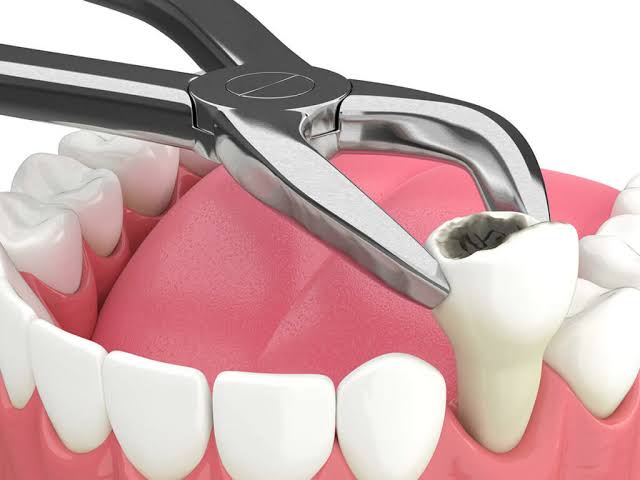If you’ve recently undergone a tooth extraction, you may be wondering when you can get back to your regular exercise routine. It’s natural to want to stay active and maintain your fitness, but it’s important to give your body the time it needs to heal properly. In this post, we’ll discover the factors that affect the healing process after tooth extraction and provide valuable tips for safely resuming exercise. So, if you’re eager to get back to your workouts, keep reading to find out how long you should wait before hitting the gym or going for a run.
Contents
How Long Should You Wait to Exercise After Tooth Extraction?

After a tooth extraction, it’s important to give your body enough time to heal before resuming your exercise routine. Exercising too soon can compromise the healing process and lead to complications. So, how long should you wait before getting back into your regular fitness activities? It depends on a few factors.
The average recommended wait time is around 48 to 72 hours. However, it’s crucial to listen to your dentist or oral surgeon’s advice, as everyone’s healing process may vary. Factors such as the complexity of the extraction, the presence of any complications, and individual healing capabilities can influence the recovery time.
During the first few days after the extraction, it’s essential to allow the blood clot to form and protect the wound. Engaging in physical activity too soon can dislodge the clot and lead to a condition called “dry socket,” which can be painful. To ensure a smooth healing process, follow these tips:
- Rest and avoid strenuous activities for at least 48 hours.
- Avoid activities that can increase blood pressure and lead to bleeding, such as heavy lifting or intense cardio exercises.
- Choose low-intensity exercises like light walks or gentle yoga to maintain some activity without putting strain on your healing mouth.
Factors to Consider Before Exercising After Tooth Extraction:
When it comes to resuming your exercise routine after a tooth extraction, there are several factors to consider to ensure a healthy and successful recovery. Here are some key points to keep in mind:
1. Healing time varies:
The healing time after tooth extraction can vary from person to person. Dentists generally recommend waiting for at least 48 to 72 hours before engaging in any physical activity. However, this time frame can differ depending on various factors, such as the number of teeth extracted, their size, and their location.
2. Blood clot stability:
After tooth extraction, a blood clot forms over the extraction site, protecting the underlying bone and nerves as they heal. Engaging in vigorous physical activity too soon can dislodge this blood clot, leading to a painful condition called “dry socket” and potentially causing infection. It’s crucial to prioritize the stability and integrity of the blood clot during the initial healing period.
3. Pain medications and side effects:
If you’re still taking pain medications after your tooth extraction, it’s important to be cautious when exercising. Painkillers can affect your body’s sensitivity to pain and mask any potential injuries you might sustain during physical activity. Take extra care to ensure that you’re not pushing yourself too hard and risking further complications.
4. Avoid strenuous activities:
During the first few days post-extraction, it’s essential to avoid any strenuous physical activities that may put excessive strain on your body. This includes heavy lifting, running or sprinting, swimming, and contact sports. Instead, opt for low-intensity exercises that promote gentle movement and allow your body to gradually regain strength.
Signs of Readiness for Exercise After Tooth Extraction:

Once you have allowed your body sufficient time to heal after a tooth extraction, you may be eager to resume your exercise routine. But how do you know if you are ready? Here are a few signs that indicate your body is prepared for physical activity:
Reduced pain: After a tooth extraction, it is normal to experience some level of discomfort. However, as your body heals, the pain should gradually subside. If you find that your pain has significantly decreased or disappeared altogether, this is a positive indication that you can start exercising again.
Decreased swelling: Swelling is another common occurrence following a tooth extraction. As the days go by, you should notice a reduction in swelling around the extraction site. This shows that the healing process is progressing well and that you can consider gradually reintroducing exercise into your routine.
Improved range of motion: Depending on the location of the extracted tooth, you may experience a limited range of motion in your mouth or jaw. As your body heals, you should notice an improvement in your ability to open your mouth fully, chew, and speak without discomfort. When you regain full range of motion, it is a sign that you can safely engage in physical activity.
Clearance from your dentist: Lastly, it is essential to consult with your dental professional before resuming exercise after a tooth extraction. They can evaluate your specific case, assess your healing progress, and provide personalized advice tailored to your needs. Your dentist’s approval and guidance are crucial to ensure a smooth transition back to your fitness routine.
Precautions to Take When Exercising After Tooth Extraction:
By following these guidelines, you can minimize the risk of complications and promote better healing. Here are some important precautions to take:
- Wait for the recommended time: It’s crucial to wait for at least 5-7 days before engaging in any strenuous physical activities. This allows the extraction site to heal properly and reduces the risk of bleeding or infection.
- Avoid heavy lifting and weightlifting routines: Heavy lifting can increase your blood pressure and put unnecessary strain on your healing mouth. It’s best to steer clear of heavy weights and strenuous weightlifting exercises for at least one week post-extraction.
- Be cautious during swimming: Swimming is generally a low-impact activity that can be resumed after a tooth extraction. However, it’s important to exercise caution and avoid submerging your head underwater or participating in activities that could risk accidental impact to the surgical site.
- Gradually reintroduce demanding workouts: Running, sprinting, and high-intensity interval training (HIIT) should be reintroduced gradually after one to two weeks. Pay attention to your body’s signals and seek advice from your dentist to determine the best timing for your unique circumstances.
Frequently Asked Questions:
How many days should you rest after tooth extraction?
Plan for at least 3-4 days of rest following the tooth extraction, depending on the procedure’s complexity and your pain tolerance.
What can’t you do after getting a tooth pulled?
For the first 24 hours after extraction, avoid activities like exercising and lifting heavy objects. Raise your head slightly when lying down.

Hello, I’m Ravindra. Over the years, I’ve immersed myself deeply into the world of fitness and health, transforming both my body and mind. Writing has allowed me to share my journey, insights, and expertise with those just starting out and seasoned fitness enthusiasts alike. Beyond just routines and diets, I believe in inspiring others to adopt a holistic approach to well-being.
